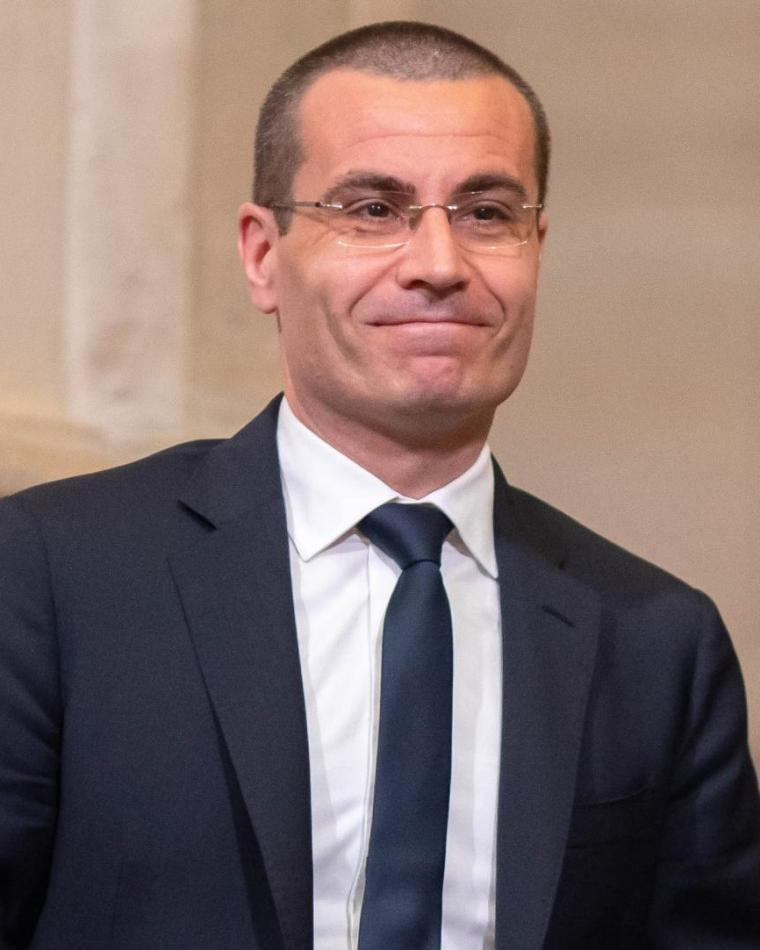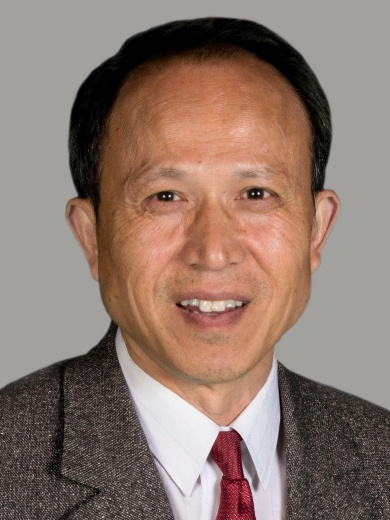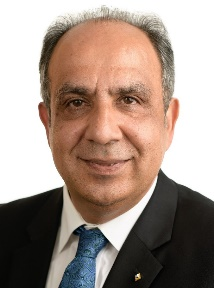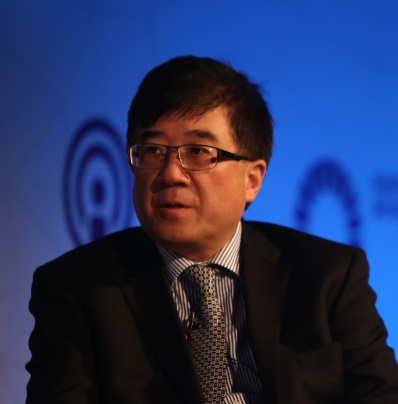| Keynote Speeches |
 Marco Di Renzo
CNRS Research Director, CentraleSupélec, France
Professor of Telecommunications Engineering, King's College London, UK Talk TitleStacked Intelligent Metasurfaces: Communication, Computing and Sensing in the Wave Domain AbstractNext-generation wireless networks are expected to utilize the limited radio frequency resources more efficiently with the aid of intelligent transceivers. In this talk, we propose a recent transceiver architecture that relies on stacked intelligent metasurfaces (SIM). An SIM is constructed by stacking an array of programmable metasurface layers, where each layer consists of a massive number of simple meta-atoms that individually manipulate the electromagnetic waves. We provide an overview of SIM-aided MIMO transceivers, including their novelty, hardware architecture, and potential benefits over state-of-the-art solutions for communication, computing, and sensing applications. Bio.:Marco Di Renzo received the Laurea (cum laude) and Ph.D. degrees in electrical engineering from the University of L'Aquila, Italy, in 2003 and 2007, respectively, and the Habilitation à Diriger des Recherches (Doctor of Science) degree from University Paris-Sud (currently Paris-Saclay University), France, in 2013. Currently, he is a CNRS Research Director (Professor) and the Head of the Intelligent Physical Communications group with the Laboratory of Signals and Systems (L2S) at CNRS & CentraleSupélec, Paris-Saclay University, Paris, France, as well as a Chair Professor in Telecommunications Engineering with the Centre for Telecommunications Research -- Department of Engineering, King's College London, London, United Kingdom.  Jiangzhou Wang
International Member of the Chinese Academy of Engineering
Fellow of the Royal Academy of Engineering, UK Talk TitleLarge AI Model for Wireless Communications AbstractIntelligent communications has been considered as a promising direction for the next generation wireless communications. However, legacy AI or small AI are facing some difficulties for the application to wireless communications. In this talk, the background and learning of the large AI model will be introduced. The recent research results of the large AI model will be presented for wireless communications applications, including multi-mode semantic communications and UAV-enabled data collection. Bio.:Jiangzhou Wang is a Professor at Southeast University and an Emeritus Professor at the University of Kent. He has published more than 600 papers and five books. His research interest is in mobile communications. He was a recipient of the 2024 IEEE Communications Society Fred W. Ellersick Prize and the 2022 IEEE Communications Society Leonard G. Abraham Prize. He is the General Chair of the 2026 IEEE Global Communications Conference (GLOBECOM2026), Macau. He was the Technical Program Chair of the 2019 IEEE International Conference on Communications (ICC2019), Shanghai, Executive Chair of the IEEE ICC2015, London, and Technical Program Chair of the IEEE WCNC2013.  Reinaldo A. Valenzuela
Member National Academy of Engineering
Director, Communication Theory Department, Bell Laboratories Talk Title6G Wireless: Challenges and Opportunities Abstract6G brings great opportunities for new, engaging, sustainable and value generating mobile networks applications and services. These will be enabled by sustained technology evolution. Starting with "Extreme Connectivity" delivering improved coverage, capacity and coverage at reduced cost per bit. Followed by "AI-Native" designs propelling automation and AI for, and on, the Radio Access Network. Leading to "Beyond Connectivity" fostering value generating and transformative applications taking advantage of new capabilities such as localization and sensing, programmability and an API frame network. I will discuss in further detail essential elements and technology enablers for this near, medium and long term 6G vision as well as 6G challenges and opportunities. Bio.:Reinaldo A. Valenzuela is a Member of National Academy of Engineering, Fellow IEEE. He received B.Sc. from U. of Chile, Ph.D. from Imperial College. He is Director of Communication Theory Department, Distinguished Member of Technical Staff, Bell Laboratories. Engaged in propagation measurements and models, MIMO/space time systems achieving high capacities using transmit and receive antenna arrays, HetNets, small cells and next generation air interface techniques and architectures. He has published 247 papers and 44 patents. He has over 35,800 Google Scholar citations and is a 'Highly Cited Author' In Thomson ISI and a Fulbright Senior Specialist.  Abbas Jamalipour
Professor of Ubiquitous Mobile Networking, The University of Sydney
Editor-in-Chief, IEEE Transactions on Vehicular Technology Past President, IEEE Vehicular Technology Society Talk Title6G-Enhanced Space-Air-Ground Networks Using Generative AI AbstractSpace-Air-Ground Integrated Networks (SAGIN) will be a game changer in providing ubiquitous connectivity to all types of digital devices in almost every corner of the world and will be empowered by the new technologies of the 6G wireless communications. Generative Artificial Intelligence (GenAI), on the other hand, will be a potential candidate in assisting the future wireless networks to achieve their goals in a more efficient way. Generative AI is a distinguished subdomain of AI, emphasizing conceptualization and generation of content. Emerges from the aspiration to enable machines to fabricate innovative and unprecedented data that faithfully mirrors the inherent patterns, structures, and nuances encapsulated in the training datasets. Unlike traditional discriminative AI models that focus primarily on analyzing and processing existing data, Generative AI holds significant advantages, including contents generation, flexibility and adaptability, with enhanced simulation and optimization capabilities. This talk outlines the potential of GenAI technology in enhancing the emerging 6G SAGIN scenarios. Bio.:Abbas Jamalipour is the Chair Professor of Ubiquitous Mobile Networking at The University of Sydney and the Editor-in-Chief, IEEE Transactions on Vehicular Technology. He holds a PhD in Electrical Engineering from Nagoya University, Japan; and is a Fellow of the IEEE, IEICE, Engineers Australia, AIIA, and a Visiting Fellow of the Royal Academy of Engineering. He has authored nine technical books, eleven book chapters, over 650 technical papers, and five patents, all in the field of wireless communications. 
Wen Tong
CTO, Wireless Network, Huawei Technologies Co., Ltd.
President, Huawei Canada R&D Talk TitleOn the Capacity-Scaling-Law for Mobile Communications AbstractOver the past 4 decades, the spectral efficiency for mobile broadband communication services has increased more than four order of magnitude, in this talk, we present the general capacity scaling law and technology roadmap for the future increase of wireless network capacity. This is important in the emerging AI era. Where wireless connectivity will be fabric for the AI Agent communications. Bio.:Dr. Wen Tong is the CTO, Huawei Wireless, he is the chief scientist for Huawei 5G/6G. He is a Huawei Fellow and an IEEE Fellow. Prior to joining Huawei in 2009, Dr. Tong was the Nortel Fellow and head of the Network Technology Labs at Nortel. He joined the Wireless Technology Labs at Bell Northern Research in 1995 in Canada. For the past three decades, he had pioneered fundamental technologies from 1G to 6G wireless and WiFi. His current research focus is AI-Wireless. He is a Fellow of Canadian Academy of Engineering, and a Fellow Royal Society of Canada. |
